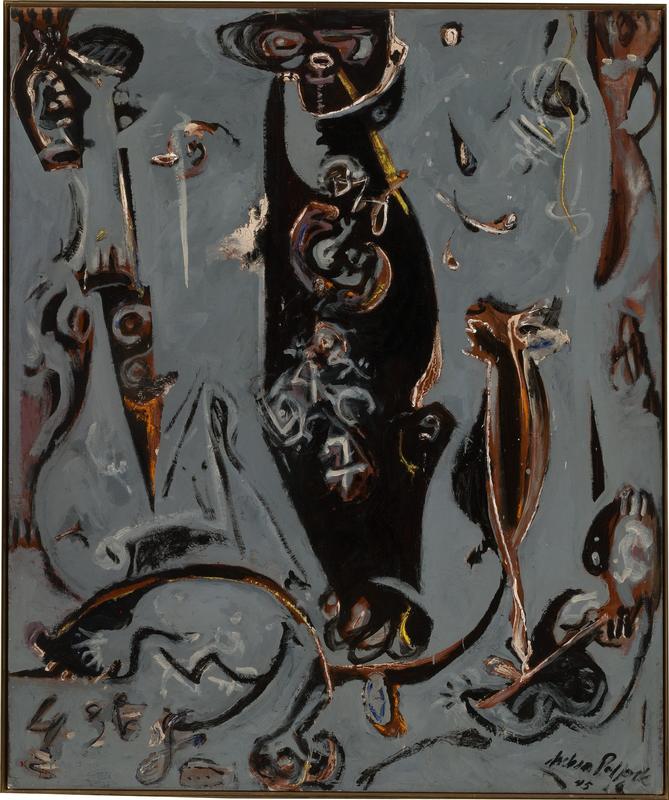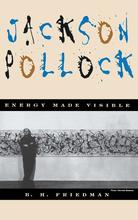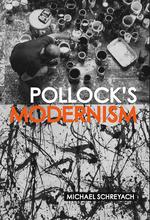More about Totem Lesson 2
- All
- Info
- Shop

Sr. Contributor
Totem Lesson 2 is not one of Jackson Pollock’s better-known works, certainly not as famous as his “drip” paintings that have sold for tens of millions of dollars.
Before Pollock became famous for his drip and spatter artworks, he painted many other subjects in a variety of styles, some of which have been compared to Pablo Picasso. For example, Horse, and Untitled (c.1939-42) are both thought to have been influenced by Picasso’s monumental Guernica. Not to be outdone, Pollock would also go on to paint his own super jumbo size works.
Since there’s a Totem Lesson 2, it would seem logical that there’s a Totem Lesson 1 out there somewhere, and there is; that one is in Stanford University’s Anderson Collection. Pollock painted the first one in 1944, and the second in 1945. So, Totem Lesson 2, in the collection of the National Gallery of Australia has a few vaguely similar elements that are in Totem Lesson. Totem Lesson 2 shares a sharp-angled geometric design with Totem Lesson 1, even located in the same area of each painting. The two paintings were exhibited together at Pollock’s second solo exhibition in New York City in 1945.
Pollock used totemic symbols in more than few of his paintings from the early to mid-1940s; this time period has even been called his “totemic period,” although the term doesn’t appear to be widely used. Besides the two Totem Lessons, there is Guardians of the Secret and The Moon Woman Cuts the Circle, among others. Ten years later, he would bring the totem back, with the brightly colored Easter and the Totem, that was said to have been influenced by Henri Matisse.
The paint Pollock used was, more often than not, house paint that he bought by the gallon, or an aluminum-based paint used by plumbers, rather than expensive oils in tubes (although he did use these as well). The gray used on Totem Lesson 2 is some of that house paint, which Pollock used to “edit” the original image that is painted in black; he painted over the parts he wanted to remove and left the rest, including the totemic image.
In Native American (and other indigenous) traditional beliefs, a totem can be a natural object, animal, or symbol that is believed to have spiritual significance; the totem can be represented by a man-made object such as a carving, painting, or sculpture such as the totem poles found in Alaska and British Columbia. In Pollock’s case, the “totems” he chose to use in his work are ambiguously human figures; at least one writer sees both male and female sexual organs in these figures and swirls, which, while certainly possible, also seems a bit of a stretch.
Pollock had been interested in Native art since his younger days living in the western U.S., and he was impressed by the objects he saw in a 1941 exhibition of Native art at the Museum of Modern Art. This, combined with his knowledge of Picasso’s interest in “primitive” art, was probably enough to influence his totemic work. As with most of Pollock’s work, trying to define what you’re seeing is difficult; the artist himself said of abstract art, “I think it should be enjoyed just as music is enjoyed - after a while you may like it or you may not."
Sources
- Australia, National Gallery of. ABSTRACT EXPRESSIONISM - HOME, 2013. https://nga.gov.au/exhibition/abstractexpress/default.cfm?IRN=45700.
- Easter and the Totem, 1953 by Jackson Pollock. https://www.jackson-pollock.org/easter-and-the-totem.jsp.
- Herman, Alexander B., and John Paoletti. "Re-Reading Jackson Pollock's "She-Wolf"." Artibus Et Historiae 25, no. 50 (2004): 139-55. doi:10.2307/1483792.
- Hunter, Sam, Jackson Pollock, and Bernard Karpel. "Jackson Pollock." The Bulletin of the Museum of Modern Art 24, no. 2 (1956): 3-36. doi:10.2307/4058271.
- Millard, Charles W. "Jackson Pollock." The Hudson Review 36, no. 2 (1983): 338-44. doi:10.2307/3856709.
- Solomon, Deborah. Jackson Pollock: A Biography. New York: Simon and Schuster, 1987.
- Soussloff, Catherine M. "Jackson Pollock's Post-Ritual Performance: Memories Arrested in Space." TDR (1988-) 48, no. 1 (2004): 60-78. http://0-www.jstor.org.pacificatclassic.pacific.edu/stable/4488529.
- Tate. “Jackson Pollock: 5 Things.” Tate.https://www.tate.org.uk/art/artists/jackson-pollock-1785/jackson-polloc….
















